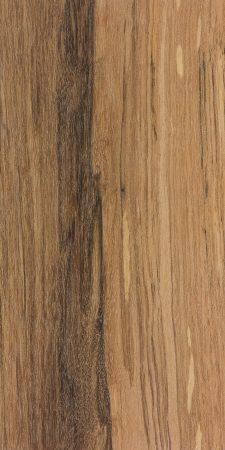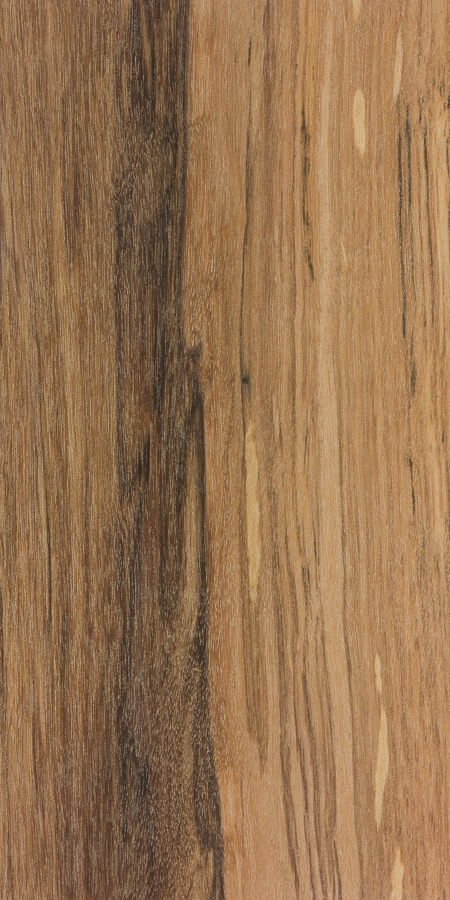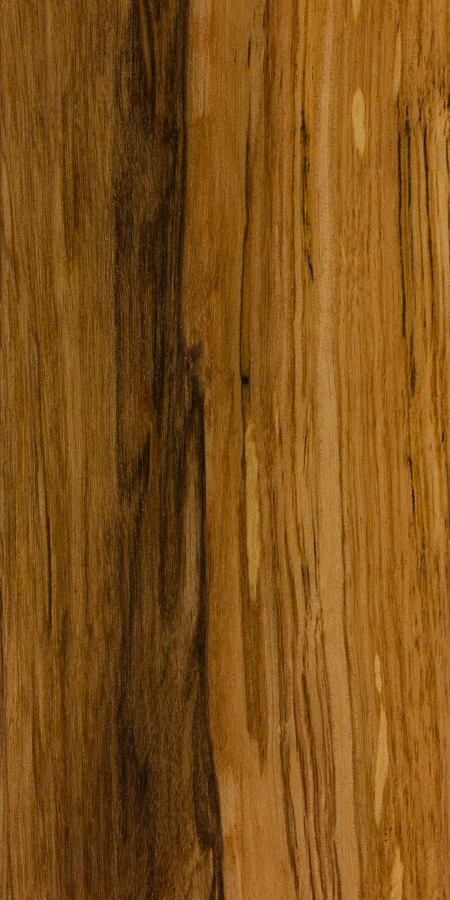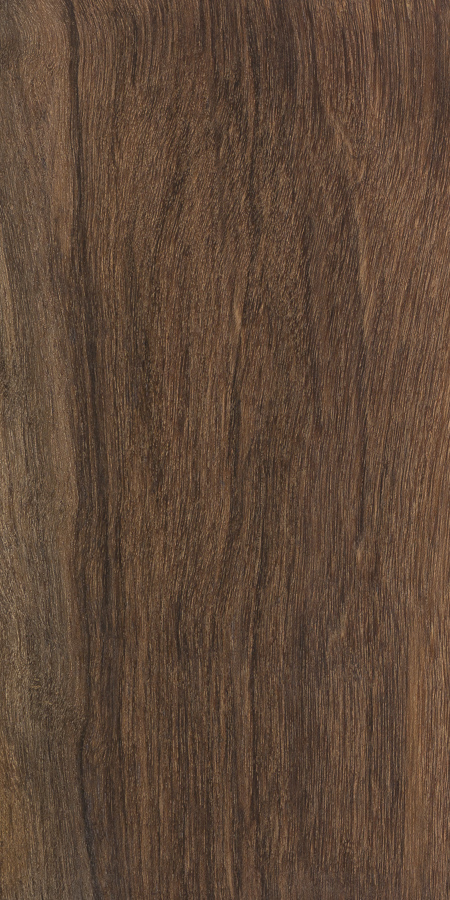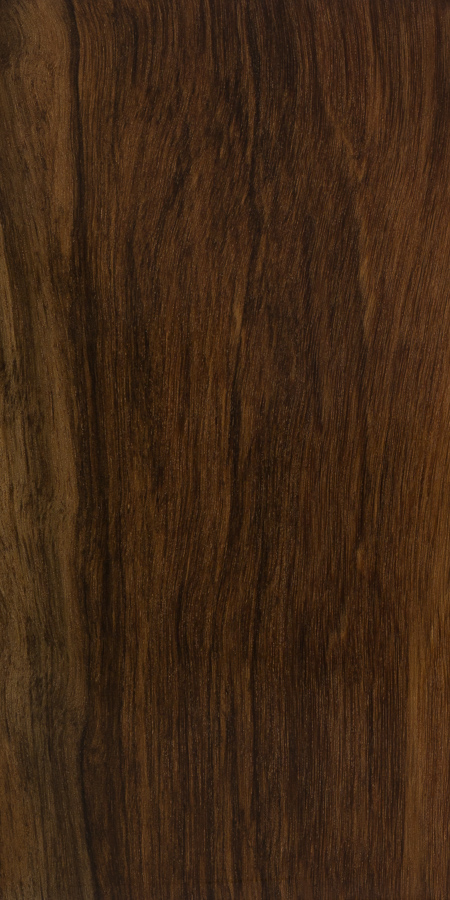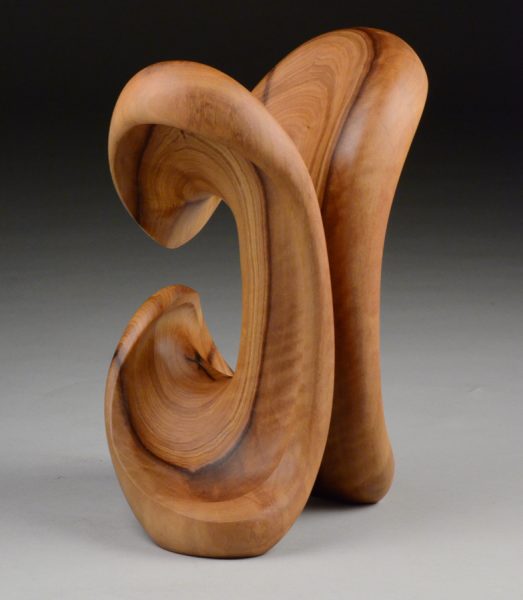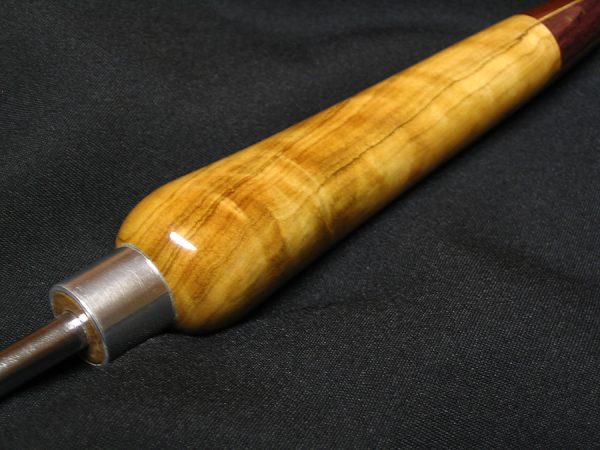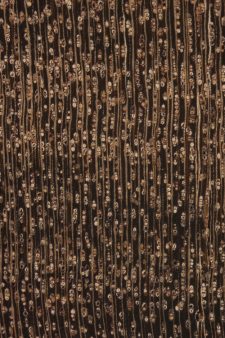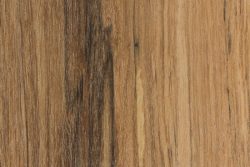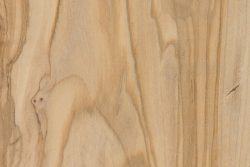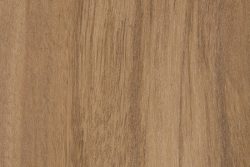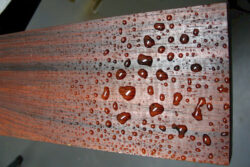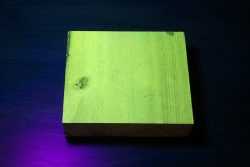DATA SOURCE(S): 1,6,15,36,38
Common Name(s): East African olive, black ironwood, Elgon olive, ironwood olive
Scientific Name: Olea capensis; divided into three subspecies (see comments below)
Distribution: Primarily East Africa, though also occurring as far west as Sierra Leone and south to South Africa
Tree Size: 65-115 ft (20-35 m) tall,
2-3 ft (.6-1 m) trunk diameter
Average Dried Weight: 62.0 lbs/ft3 (975 kg/m3)
Specific Gravity (Basic, 12% MC): .74, .98
Janka Hardness: 2,700 lbf (12,000 N)
Modulus of Rupture: 22,530 lbf/in2 (155.4 MPa)
Elastic Modulus: 2,577,000 lbf/in2 (17.77 GPa)
Crushing Strength: 11,180 lbf/in2 (77.1 MPa)
Shrinkage: Radial: 5.4%, Tangential: 8.8%,
Volumetric: 14.4%, T/R Ratio: 1.6
Color/Appearance: Heartwood is typically yellow to light reddish brown, with contrasting darker brown to black streaks and veins. Yellowish sapwood is generally sharply demarcated from the heartwood, though it can be harder to tell apart if the heartwood lacks contrasting streaks. Overall color tends to deepen with age. Olive is sometimes figured with curly or wavy grain, burl, or wild grain.
Grain/Texture: Grain may be straight, interlocked, or wild. Fine uniform texture with moderate natural luster. Slightly oily to the touch.
Rot Resistance: Rated as moderately durable to durable. Susceptible to termites and other borers, though resistant to powder-post beetles.
Workability: Can be somewhat difficult to work on account of its density and sometimes wild or interlocked grain, resulting in tearout during surfacing operations. Due to the high oil content found in this wood, it can occasionally cause problems with gluing. East African olive has high movement in service, and is considered to have poor stability, though perhaps not to the extent of Olea europaea, since trunk wood is more frequently harvested, instead of the more-problematic branch wood. Turns, carves, and finishes well.
Odor: Has a distinct, fruity scent when being worked.
Allergies/Toxicity: Although severe reactions are quite uncommon, olive has been reported as a sensitizer. Usually most common reactions simply include eye and skin irritation. See the articles Wood Allergies and Toxicity and Wood Dust Safety for more information.
Pricing/Availability: Typically only available as veneer or smaller craft blanks, natural-edged slabs and smaller boards are occasionally available. Expect prices to be high for an imported hardwood.
Sustainability: This wood species is not listed in the CITES Appendices, and is reported by the IUCN as being a species of least concern.
Common Uses: High-end furniture, veneer, turned objects, and small specialty wood items.
Comments: Olea capensis is currently divided into three subspecies,[1]Green, P. S. (2002). A revision of Olea L.(Oleaceae). Kew Bulletin, 91-140. and the taxonomy of the species contains many synonyms used in literature in the past.[2]Lemmens, R. H. M. J., Louppe, D., & Oteng-Amoako, A. A. (2012). Timbers 2 (Vol. 7), 501-504. PROTA.
An overall view of the current subspecies, along with synonyms:
- Olea capensis subspecies capensis (syn. O. laurifolia)—native to South Africa. Tends to be a shrub or small tree. Can yield wood that’s very heavy.
- O. capensis ssp. enervis—native to Eswatini and South Africa. A less common species tending to occur as a shrub or small tree.
- O. capensis ssp. macrocarpa (syn. O. hochstetteri)—the most widespread, and most commercially significant. Can occur as a larger tree, yielding more sizeable pieces of lumber.
The first subspecies listed above, Olea capensis ssp. capensis is the subject of frequent misunderstandings, and is misrepresented as the “heaviest wood in the world” (originally referenced under the synonym O. laurifolia).[3]Hoadley, R. B. (2000). Understanding wood: a craftsman’s guide to wood technology, p. 15. Taunton press. In actuality, this should be seen as a reference to a single specific piece of wood—with a reported density of 93 lbs/ft3 (1,490 kg/m3)—and not a representation of the average for this subspecies. This type of exceptionalism in wood is discussed in the video The Quest for the Hardest Wood in the World (see below). (And as a point of rebuttal, a single piece of waddywood (Acacia peuce) has since been documented to weigh in at 95 lbs/ft3 (1522 kg/m3)[4]Lake, M. (2013). Contender for ‘Heaviest Wood.’ World of Wood, 66(1), 25.—besting the oft-misapplied crown as the world’s heaviest wood.
Another closely related species, Elgon olive (Olea welwitschii) has sometimes been treated as another subspecies (listed as O. capensis ssp. welwitschii), though the wood tends to be lighter in weight, and is also now generally regarded as a separate species.[5]Green, P. S. (2002). A revision of Olea L.(Oleaceae). Kew Bulletin, 91-140.
Although East African olive is not known for its fruit, the species is sometimes used as a root stock, with branches of cultivated Olea europaea being grafted on to produce edible olives. Consequently, because O. capensis is not known for its commercial fruit production, entire trees (especially wild trees) are sometimes harvested for lumber—a practice that would almost be considered sacrilege for fruit-bearing cultivated olive trees, whose recurring fruit is a much more profitable source of income than the lumber.
East African olive is sometimes called black ironwood on account of its high density, not to be confused with Krugiodendron ferreum, a Central American species which also goes by the name black ironwood.
Images: Drag the slider up/down to toggle between raw and finished wood. The second sample shows the variability in color for this species, and should be considered fairly dark for olive.
A special thanks to Salem Barker for providing a sculpture photo of this wood species.
Identification: See the article on Hardwood Anatomy for definitions of endgrain features.
Porosity: diffuse porous; growth rings generally not discernible
Arrangement: primarily in radial multiples of two to four
Vessels: small to medium, moderately numerous to numerous; yellowish brown deposits common
Parenchyma: vasicentric, though on most samples very little if any parenchyma is visible
Rays: narrow width, normal spacing
Lookalikes/Substitutes: With its dramatic contrasting streaks and veins, olive is sometimes confused with zebrawood (Microberlinia brazzavillensis). However, zebrawood has very large pores (giving the wood a coarse, open texture), as well as visible winged and banded parenchyma.
Notes: Elgon olive (Olea welwitschii) is a closely related species that is very similar to O. capensis. Generally, the wood is about 20% lighter, and the pores may be slightly larger in O. welwitschii.
Related Content:
References[+]
| ↑1, ↑5 | Green, P. S. (2002). A revision of Olea L.(Oleaceae). Kew Bulletin, 91-140. |
|---|---|
| ↑2 | Lemmens, R. H. M. J., Louppe, D., & Oteng-Amoako, A. A. (2012). Timbers 2 (Vol. 7), 501-504. PROTA. |
| ↑3 | Hoadley, R. B. (2000). Understanding wood: a craftsman’s guide to wood technology, p. 15. Taunton press. |
| ↑4 | Lake, M. (2013). Contender for ‘Heaviest Wood.’ World of Wood, 66(1), 25. |

